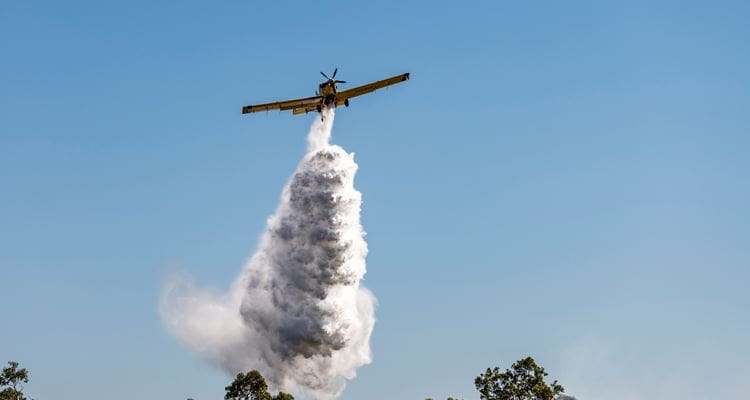
Waterbombers can cruise at a speed of 280kmh and drop up to 3150 litres at a time. Photo: WA Government
FIXED-WING waterbombers will again be based in Western Australia’s grain-growing regions to boost firefighting capability and reduce the severity of crop fires during the hottest stretch of harvest.
Now entering its third year, the Grain Harvest Aerial Fleet allows strike teams to be deployed to high-priority fires at short notice, boosting response times across WA’s 9-million-hectare grain-production area.
The fleet was activated a day early in response to a trough that will increase fire danger ratings through central WA this week.
Two strike teams will be periodically based throughout the Mid West-Gascoyne, Wheatbelt, and Great Southern regions, with the duration of each deployment to be based on ongoing risk assessments.
Emergency Services Minister Stephen Dawson said one team started in Geraldton on Tuesday and the second team will start on November 8 at Cunderdin in the Central Wheatbelt.
“By strategically basing aircraft in areas where there is increased bushfire risk, we can reduce response times and better protect regional communities,” Mr Dawson said.
“Crops provide an easy source of fuel for fires to take hold, so this strategy is about supporting firefighters on the ground in the initial stages of fires.
“Crop fires are often sparked by machinery or lightning and when combined with dangerous weather conditions they can escalate quickly.
“Not only does this protect agricultural communities during a time of heightened risk, it also supports a crucial part of the Western Australian economy.”
Each strike team includes a five-person crew, two fixed-wing waterbombers, an air-attack supervision aircraft, and a fuel truck that can be deployed to assist ground crews.
The fixed-wing waterbombers can cruise at a speed of 280kmh, drop up to 3150 litres of water, foam or retardant, and require just minutes to refuel and reload.
During the 2022-23 harvest, the strike teams completed 205 drops across 28 incidents, dropping 645,750l on firegrounds from Geraldton to Esperance.
Agriculture and Food Minister Jackie Jarvis said the fleet was vital to protecting the state’s valuable grain crop.
“The Grain Harvest Aerial Fleet will not only help protect farmers and regional communities, but also Western Australia’s nine-million hectare grain production area,” Ms Jarvis said.
“The grain sector is extremely valuable to the WA economy and is the state’s second-largest export commodity.”
The program is funded by the Department of Fire and Emergency Services with support from the Department of Biodiversity, Conservation and Attractions and Department of Primary Industries and Regional Development.
Source: WA Government

HAVE YOUR SAY